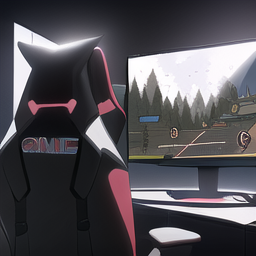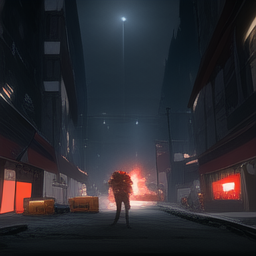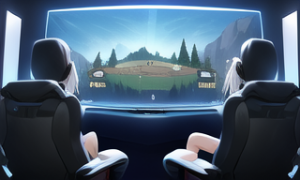The End of Gaming as We Know it?

Introduction
The following is an opinion piece by me on the topic of video games in 2022. I was invited to write this for a website that covers current events and trends related to technology, but my views are entirely my own.
This is a very important topic and one which will shape our future greatly, so please take some time to read through what follows before forming your opinions or making any comments. Thank you!
For those who don’t know me, my name is Lanna. You may remember me from such posts as ‘Why Is This Game So Annoying?‘ or ‘How To Stop Procrastinating and Start Working‘ . As I’m sure many of you can appreciate, these two articles were very popular and received thousands upon thousands of hits.
In fact, both of them have become classics in their own right and continue to be referenced by people all over the world today. My work has been seen across various social media platforms like Facebook and Twitter and has even reached as far as Reddit. I also have quite a large following of fans on Instagram where I post pictures of myself dressed up in fancy outfits at various locations around the world.
As you might imagine, it’s not often that I get asked to contribute to websites covering topics outside of my area of expertise, but when I did recently receive this invitation to write about video games in 2022, I couldn’t help myself. If anything, I think this is something that should be shared with everyone – especially if we want to prevent a decline in interest and investment into the industry.
Now then, let’s start off with a little history lesson…
History Lesson
Back in 2012, there was a surge in demand for online multiplayer gaming. People wanted to play games against other players and connect with friends all over the world. With more people playing together, companies realized they could make money from selling access to these services. They began building game worlds filled with exciting new content that would keep gamers coming back again and again. Some of these environments were free while others had to be purchased. But either way, they brought in lots of cash flow for publishers.
With so much activity going on, the market grew rapidly. However, after a few years, things started to slow down. Why? Well, there weren’t enough new users joining up every day. There wasn’t a steady stream of fresh blood flowing into the ecosystem, so the existing members lost interest. And when they stopped paying attention, publishers didn’t earn any revenue.
So what happened next? Publishers took a long hard look at how the system worked and decided it needed fixing. The first step was to reduce the number of servers available. Then they made everything cost real money instead of being freely accessible. Once that was done, publishers focused on attracting bigger audiences rather than trying to bring in as many people as possible. After that, the number of subscribers increased dramatically once more and the business model seemed to be working.
I’ve played for three hours straight without stopping, yet still haven’t got anywhere.
However, now there were fewer customers, each individual user was spending less time logged in and doing activities within the virtual environment. And although this meant that the company owners were earning a lot more money, it wasn’t good news for anyone else involved. In fact, the whole thing was starting to feel pretty pointless.
To put it bluntly, it felt like the whole point of the game was just to make the publisher richer.
It didn’t take too long for the gaming community to realize that something fundamental was wrong here. They started talking about a decline in interest, saying things like “I’ve played for three hours straight without stopping, yet still haven’t got anywhere.”
At first, developers responded by adding extra features to entice players back. For example, they created massive dungeons with multiple floors, hoping that they’d get the same amount of use out of them as they did the old ones. Sadly though, no matter how much fun the new areas were, the overall experience just wasn’t the same. Players spent most of their time wandering around aimlessly, waiting for something to happen. When it finally did, they ran away screaming because nothing ever really changed.
Meanwhile, the competition was thriving. By constantly improving its service and upping the ante in terms of content, they managed to stay ahead of the curve. In turn, this caused an increase in popularity and helped to boost the industry even further.
Then came VR. It promised a brand new type of gaming experience and was designed to provide people with a fully immersive reality. Of course, it failed miserably and fell into obscurity after only a few months. A big part of the problem was the fact that the technology itself was flawed. No one was able to achieve the level of immersion they were looking for. Instead, it turned out to be a bit of a fad.
But things soon improved thanks to the emergence of Augmented Reality. Thanks to this, players could see their characters moving around in front of them, but they could also hear sounds and watch objects reacting to what they were doing. It gave them the sense of presence they craved, but it didn’t last long either. Soon, the novelty wore off and players moved on to the next big thing.
By 2022, the gaming industry had reached a crossroads. Things looked bleak and publishers were losing faith.
On one hand, they knew that if they continued down the path of making everything pay-to-play, they’d eventually hit a wall. Nobody would be willing to spend any more money on the service, so they wouldn’t get as many people logging in. On top of that, the current generation of kids would grow up thinking that it was normal to have to buy stuff to do stuff. Eventually, they’d stop caring about gaming altogether.
But if they went back to making games for free, the whole industry would collapse. How could they expect to survive in a marketplace where the only option was to sell access to an empty world? What kind of future is that?
As you can probably tell, there were a lot of issues facing the gaming community at this point. Some of these problems were easy to solve, but others weren’t. Ultimately, there was no single solution that could resolve all of the concerns. Instead, there was a need for a new approach. One that combined the best parts of both worlds and addressed all of the key challenges.
And that’s exactly what they found.
What about the future?
In 2027, the gaming world will be thriving once more. This will be largely due to the fact that the gaming industry would evolves to meet the needs of modern players. Everything would be based around a core set of principles that everyone could agree on:
• Everyone gets access to a world full of interesting places and activities.
• Players can choose whether or not they want to purchase items, but they’ll always have the opportunity to try them out first.
• All of the content will come with instructions and guidelines to help new players learn how to use it effectively.
• Each individual player will be given credit for their contributions to the world.
These changes won’t only benefit the players, however. They’ll also make life easier for developers, publishers and investors alike. That means there’ll be more money flowing into the ecosystem and everybody will be happy.
For example, imagine you’re the CEO of a video game development studio. If you make a great game, you know you’ll attract plenty of people. Now imagine that you charge for access, which means you lose a certain percentage of your audience. If your game doesn’t live up to expectations, you stand to lose a lot of money.
Now consider the role of a gamer. If you log into your favorite MMORPG, you can’t help but notice all of the amazing graphics. You know that the developer has spent a lot of time and effort creating this world, so you feel a strong connection with it. But if the gameplay isn’t very engaging, you’ll quickly lose interest and move onto something else.
Both scenarios are undesirable. And that’s why there will never be another subscription fee in the gaming industry again. From this point forward, players will simply get to enjoy themselves without having to worry about handing over any cash. At the end of the day, they decide what they want to do and how much money they want to spend.
A good example is Habbo private servers. These are completely separate worlds where people play by their own rules. You can walk around as you please, interact with other users and explore whatever takes your fancy. There aren’t any limitations on your behavior whatsoever, which makes it perfect for people who want to act like complete assholes.
In short, these private servers allow players to have their cake and eat it too. They get to play the games they love without any annoying restrictions or limits, while at the same time avoiding any drama or trolls. They’re paying for what they want to do rather than giving up anything important in return. It’s a win-win situation.
And while we’re on the subject of the future, I’d like to give you a sneak peek at what’s coming next. We’ve already established that all the content will be provided free of charge, which is great news for everyone involved. But you may be wondering where the money comes from?
Well, don’t worry, because we’ve thought of a solution for that too.
In 2027, we’ll be introducing a system called Skillcoin. This will be used to reward gamers for participating in the virtual world. It’s a simple concept really. Every time you perform an action, you’ll be rewarded with points that can be exchanged for different types of currency. For example, you could use them to buy items from a shop, upgrade your character or pay for additional storage space.
Conclusion
As you can see, the gaming industry will be unrecognizable compared to what it looks like today. Not only will it provide players with a much better experience, but it will also bring in more revenue than ever before. As a result, publishers will have more freedom to create exciting new worlds, invest in new technologies and hire talented individuals to work on innovative projects.
That said, it’s worth noting that some aspects of the gaming industry won’t change. Developers will still have to compete with each other to gain a foothold in the marketplace. And while there will certainly be more opportunities than ever before, it won’t necessarily mean that anybody is guaranteed success. In fact, there will be a lot of hard work required along the way.
Nevertheless, there’s no denying that the gaming industry will be healthier than it’s been in years. That means that we’ll be able to enjoy our favorite titles for many years to come. And the sooner we realize that this is a good thing, the happier we’ll all be.
What are your thoughts? Do you think that the gaming industry is headed towards a bright future? Or does this seem like a step backwards? Please leave your comments below. I look forward to hearing from you!



